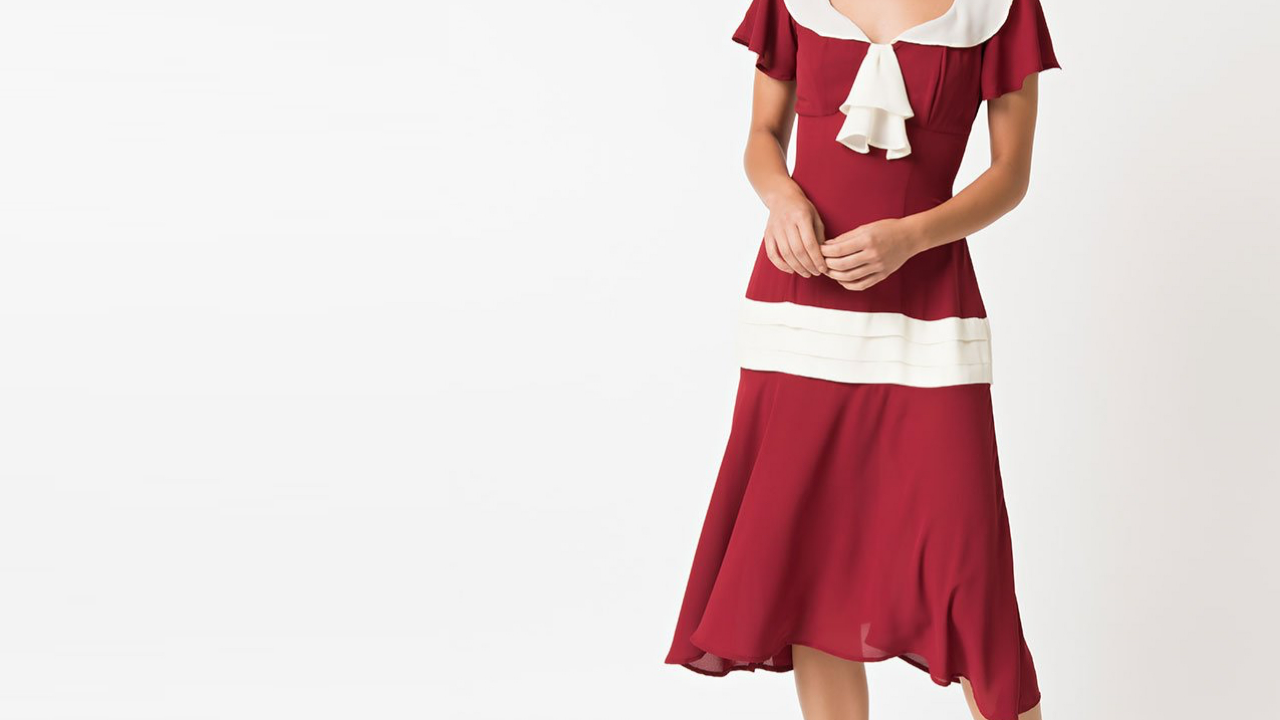AllVintageStyles
The Ultimate Vintage Fashion Encyclopedia
Dropped Waist Dress


Dress with decorative waistline positioned at hip level, representing 1920s rejection of Victorian corseted silhouettes and epitomizing flapper fashion revolution.
Quick Facts
- Era: 1920s (peak popularity 1920s-1930s)
- Origin: Europe/United States (flapper culture and women's liberation movement)
- Garment Type: Revolutionary dress with anti-Victorian waist placement
- Key Identifiers: Hip-level waistline, decorative waist treatment, straight or pleated skirt, knee-length hemline
- Typical Resale Price: $180-$900 (authentic vintage pieces)
- Best For: Flapper fashion collectors, jazz age enthusiasts, 1920s dance wear seekers
History & Evolution
Dropped waist dresses emerged from the 1920s fashion revolution when designers deliberately positioned decorative waistlines at hip level to reject Victorian emphasis on corseted natural waists. The style represented radical departure from traditional feminine silhouettes that emphasized hourglass figures, instead celebrating boyish, liberated silhouettes that prioritized movement and comfort over conventional beauty standards. Early versions featured elaborate beading, embroidery, or fabric treatments at the dropped waistline to create visual interest.
The mid-1920s established dropped waist dresses as essential flapper wear when jazz age culture demanded garments suitable for Charleston dancing and active social participation. The hip-level waist placement allowed freedom of movement while maintaining fashionable sophistication, appealing to young women seeking clothing that matched their liberated lifestyles. Department stores and dressmakers created versions ranging from simple day wear to elaborate evening gowns with intricate dropped waist decorations.
The late 1920s and early 1930s saw dropped waist styling achieve mainstream acceptance across all social classes while maintaining association with modern feminine independence. The economic challenges of the Great Depression gradually shifted fashion toward more fitted silhouettes, but dropped waist influence continued in casual and dance wear. Contemporary fashion occasionally revives dropped waist elements, but vintage pieces offer superior construction quality and authentic proportional relationships reflecting original flapper fashion innovation.
Authentication Tips
Authentic 1920s-1930s Features:
- Hip-level waist placement with decorative treatment or seaming details
- Quality silk, crepe, or fine wool fabrics with proper drape and weight
- Hand-finished construction with authentic 1920s tailoring techniques
- Period-appropriate decorative elements including beading, embroidery, or fabric manipulation
- Side snap closures or simple buttons rather than back zippers
Common Reproductions/Modern Pieces:
- Waist placement too high or low lacking authentic 1920s hip-level positioning
- Synthetic fabrics with poor drape inappropriate for authentic flapper styling
- Machine construction without hand-finished details typical of quality 1920s dressmaking
- Modern decorative elements or techniques not available during authentic production periods
- Contemporary closures like back zippers not used in 1920s dress construction
Styling & Use Cases
- Best for flapper enthusiasts: Pair with T-bar shoes and long pearl necklaces for authentic 1920s jazz age styling
- Ideal for vintage dancers: Combine with period headbands and accessories for Charleston dancing and vintage dance events
- Perfect for collectors: Display as examples of revolutionary 1920s fashion that rejected Victorian feminine constraints
Modern styling tips:
- Embrace the dress's straight silhouette by choosing accessories that enhance rather than compete with the dropped waist detail
- Layer with authentic 1920s-style coats or wraps to maintain period-appropriate proportional relationships
- Focus on jewelry and accessories that reference the jazz age without creating costume-like appearance
FAQ
Q: How can I tell if a dropped waist dress is authentic 1920s construction?
A: Check for hip-level waist placement with decorative treatment, quality silk or crepe fabrics, hand-finished construction techniques, period-appropriate decorative elements like beading or embroidery, and side snap closures rather than modern zippers.
Q: What's the typical price range for vintage dropped waist dresses?
A: Authentic vintage dropped waist dresses range from $180-900 depending on fabric quality, decorative complexity, and condition. Elaborate beaded pieces or documented 1920s examples command premium prices among flapper and jazz age collectors.
Q: How should I care for a vintage dropped waist dress?
A: Professional cleaning is essential for beaded or delicate pieces, store on padded hangers to maintain silhouette, handle decorative elements carefully, and avoid alterations that could compromise the authentic dropped waist proportions.
Q: What makes vintage dropped waist dresses valuable to collectors?
A: Revolutionary significance in rejecting Victorian corseted fashion and promoting women's liberation, superior 1920s construction quality with hand-finished details, cultural documentation of flapper movement and jazz age lifestyle, and rarity due to age and delicate fabric survival challenges from nearly century-old garments.
📷: Deco Weddings
